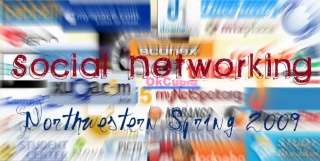Braes Paradox in Traffic Reporting
5 posters
Page 1 of 1
 Braes Paradox in Traffic Reporting
Braes Paradox in Traffic Reporting
http://www.trafficgauge.com/online_web_chicago.html
That's a fun little link that gives you status on all the roads around Chicago (it doesn't have data running at all times). This acts as an added resource in the system that may make the Nash equilibrium worse. What happens is that people will see the traffic/condition report and change their routes accordingly. They might not realize that everyone else can do this too and they'll likely end up on the same route as you, thus increasing your delay time if the road reaches its critical capacity.
That's a fun little link that gives you status on all the roads around Chicago (it doesn't have data running at all times). This acts as an added resource in the system that may make the Nash equilibrium worse. What happens is that people will see the traffic/condition report and change their routes accordingly. They might not realize that everyone else can do this too and they'll likely end up on the same route as you, thus increasing your delay time if the road reaches its critical capacity.
JulianJ- Posts : 18
Join date : 2009-04-13
Location : Maple Penthouse
 Re: Braes Paradox in Traffic Reporting
Re: Braes Paradox in Traffic Reporting
This brings up an interesting point of how knowledge can lead to traffic in an example like this. Often I have found when driving into NYC that if you listen to the news about an hour before you leave which ever roads they are reporting as being the worst tend to be the best by the time you get there since the news reports hit such a large number of users on the road network this new information about potential traffic drives the traffic some where else. This is similar to Braess's paradox where extra resources, in this case information, can cause the traffic to get worse. It also brings up the question that perhaps better use of information networks could potentially be more beneficial to traffic flow problems than actually adding to the road itself.
Matt Dolph- Posts : 31
Join date : 2009-04-01
 Re: Braes Paradox in Traffic Reporting
Re: Braes Paradox in Traffic Reporting
Many people now have in car GPS devices for directions and follow them blindly. Many of these devices now have a way of getting live traffic data. The idea is that users of these devices will not run in to traffic since they will be automatically routed around it. I'm not sure how common this is, but this system could cause a fluctuation of congestion and no congestion on popular roads by saying that the roads are free and not free, respectively. This is similar to the second post. However, if they are made to coordinate, then, at least for users with these devices, a more optimal solution could be obtained, as long as people listen to their devices. While some people may get screwed if this were to happen, the victim drivers could be rotated using a centralized system.
Stephen Brenner- Posts : 28
Join date : 2009-04-13
 Re: Braes Paradox in Traffic Reporting
Re: Braes Paradox in Traffic Reporting
I agree with what the other two people said on this topic. We should also take into consideration that some roads are bi-directional and some are one way. Even though the information network provides the traffic condition, it does not necessarily give us the condition for more than one direction. One good example would be the highway, such as say, one way would be packed because people are coming back from work while the other side is running smoothly. Thus we also must pay attention to the time when the volume is high. The graphs we have learned in class takes a look at an instant in time, but traffic constantly changes over time, and thus one road might have heavy delay could be cleared up in an instant thanks to information networks or gps systems.
Augustus Tsai- Posts : 17
Join date : 2009-04-03
 Braess''s paradox applied in New York on Broadway
Braess''s paradox applied in New York on Broadway
I also agree with the above comments and, in addition to the factors already mentioned surrounding traffic regulations like one-way streets, another factor to be considered is the different intersections, such as those along the busy New York street, Broadway.
http://www.nytimes.com/2009/02/26/nyregion/26broadway.html?_r=1&partner=rssnyt&emc=rss
This article points out the efforts of officials to ease traffic congestion by closing down specified areas of Broadway in Times Square and Herald Square. The writer uses the phrase "Although it seems counterintuitive, officials believe the move will actually improve the overall flow of traffic." This word "counterintuitive" points right to Braess's paradox and its rationale that removing routes can reduce delays due to traffic. They discuss the layout of the streets including Broadway's diagonal intersections with many other streets that often cause congestion.
http://www.nytimes.com/2009/02/26/nyregion/26broadway.html?_r=1&partner=rssnyt&emc=rss
This article points out the efforts of officials to ease traffic congestion by closing down specified areas of Broadway in Times Square and Herald Square. The writer uses the phrase "Although it seems counterintuitive, officials believe the move will actually improve the overall flow of traffic." This word "counterintuitive" points right to Braess's paradox and its rationale that removing routes can reduce delays due to traffic. They discuss the layout of the streets including Broadway's diagonal intersections with many other streets that often cause congestion.
Brooke Stanislawski- Posts : 22
Join date : 2009-04-03
 Similar topics
Similar topics» The Eligible-Bachelor Paradox
» Birthday Paradox - Redux
» Working with Braess' Paradox
» eligible bachelor paradox
» Braess's Paradox - 42nd Street in NYC
» Birthday Paradox - Redux
» Working with Braess' Paradox
» eligible bachelor paradox
» Braess's Paradox - 42nd Street in NYC
Page 1 of 1
Permissions in this forum:
You cannot reply to topics in this forum|
|
|
